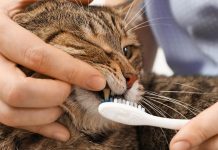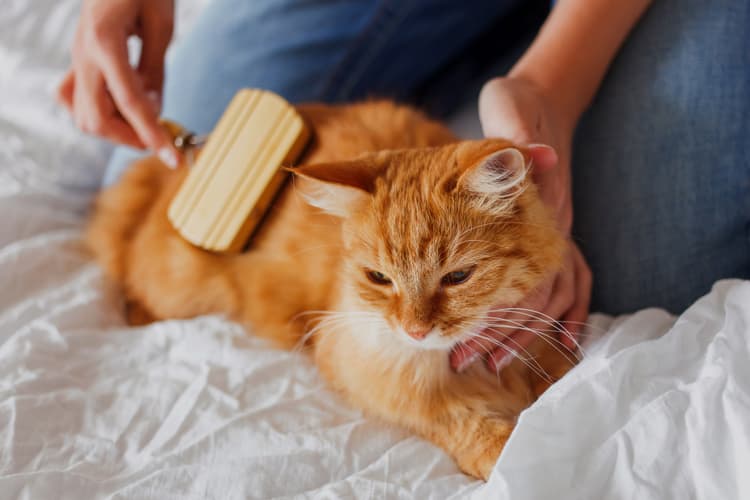With the consistently developing arrangement of cat litter accessible, it’s possible your cat may be powerless to some of them. Acknowledge what to search for, and what to do about it.
Cat litter has advanced essentially since it was first created in 1947. For a seriously lengthy timespan, people relied upon assortments of a granular earth-based litter. Today, cat litter contains a creating industry that is evaluated to hit $4 billion out of 2020 and has grown a puzzling assurance of litter choices. Given the wide arrangement of things accessible (see sidebar underneath), it’s not stunning that some can create clinical issues in explicit cats – including hypersensitivities. Here is the method for seeing whether your cat might be overly sensitive to his litter, and how to help him.
Is my cat responsible to cultivate litter hypersensitivities?
A sound adult cat is less disposed to litter hypersensitivities. The most feeble masses are felines, seniors, and safe compromised cats (for instance FIV+). Brachycephalic or level-nosed assortments, for instance, the Persian, Himalayan, and Scottish overlay are moreover more sensitive to respiratory circumstances. Cats that experience the evil impacts of various hypersensitivities will undoubtedly cultivate litter responsive qualities.
Litter buildup can cause sinus or respiratory eruptions in two people and cats. While individuals can break covers while clearing down litter boxes, cats can’t. Remember furthermore that a catlike’s nose is simply around 8″ all along, he attracts much closer to his litter than you do.
Litter sensitivity side effects
While these side effects can be brought about by various allergens, litter might be the offender on the off chance that you can’t track down some other reason.
Actual indications
Sniffling, hacking, wheezing, runny eyes or nose.
Regurgitating or loose bowels.
Unexpected expanding of the face from anaphylactic shock (an interesting however perilous unfavorably susceptible response that limits wind stream and breath). Contact a vet right away.
Social side effects
Overabundance licking or preparing in light of tingling. Over-preparing can prompt missing fur or uncovered patches.
Expanded biting, scratching, or gnawing while at the same time preparing.
Expanded scratching around the ears, or ear contamination.
Inability to utilize the litter box, ruining fresh or somewhere else.
Assuming you presume a litter sensitivity, have a go at changing to another item. Assuming indications persevere, take your feline to the vet. Aversions to feline litter might be analyzed through blood or intradermal testing.
8 methods for forestalling litter sensitivities
1. Use a hypoallergenic litter. Conventional non-clustering feline litters will more often than not be dusty, working up billows of airborne particles when poured from the holder, or when a feline is diving in the litter box. Indeed, even litters promoted as “dust-free” aren’t 100 percent liberated from dust. Understand marks and fixing records, yet remember that a few recipes are restrictive and there is no current regulation ordering a total fixing list.
Emphatically scented litters with synthetic aromas are potential allergens. Indeed, even normal aromas from rejuvenating oils are bad all of the time for felines – not on account of the actual oils, but because of their quality. It wouldn’t be practical for makers to utilize restorative or food-grade quality natural balms in their litter items.
2. Switch your feline’s litter, continuously eliminating the old with the new throughout the span of a couple of days. Felines don’t see the value in unexpected changes. Assuming your feline has a sensitivity, it might require two weeks to see a distinction.
3. Scoop the litter box every day to keep it as perfect as could be expected. Since numerous equations guarantee a smell-free home for as long as ten days, a few shoppers figure this implies they don’t need to clean the crate consistently. Yet, crap is crap. It very well may be covered by litter yet it will not disappear without scooping. Not all felines like to cover their crap, and on the off chance that litter isn’t scooped frequently, it becomes both unattractive yet unhygienic. It’s additionally vital to routinely wash the litter box down to limit dust allergens.
4. Wash your feline consistently, or wipe his fur to eliminate any litter residue or pieces held up between his toes.
5. Most felines like protection while doing their litter box business, yet circumspectly screen him for any sniffling or hacking.
6. Keep your home spotless, very much cleaned, and vacuumed. Clean the litter box region, bedding, toys, and different items to limit the impacts of litter dust. Utilize a litter mat to decrease following to the remainder of the house.
7. Utilize an air purifier close to the litter box – not a synthetic shower or module deodorizer, but rather an enzymatic smell neutralizer.
8. Observe a spacious, revealed litter box your feline likes and spot it in a ventilated region that is likewise tranquil, low-traffic, and simple to get to.
In attempting to decide the wellspring of your feline’s sensitivities, you might not have thought about his litter. In any case, you might track down that changing to another item, or potentially finding a way ways to limit litter dust, will get the job done.
Views: 9































